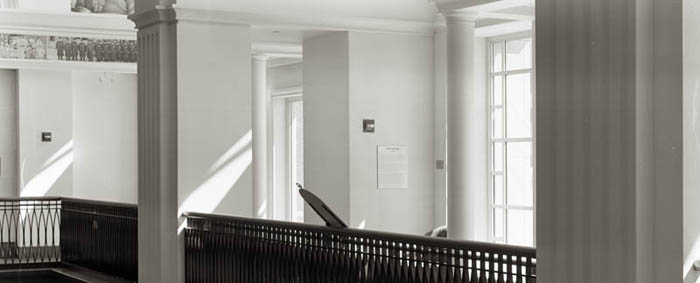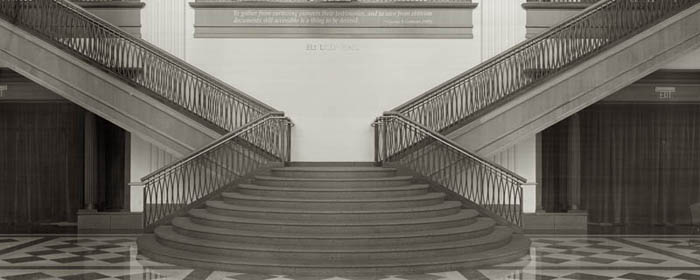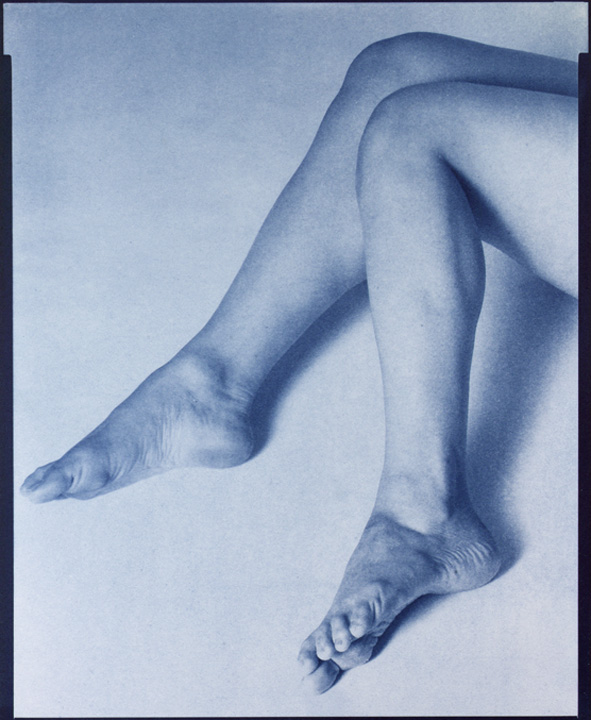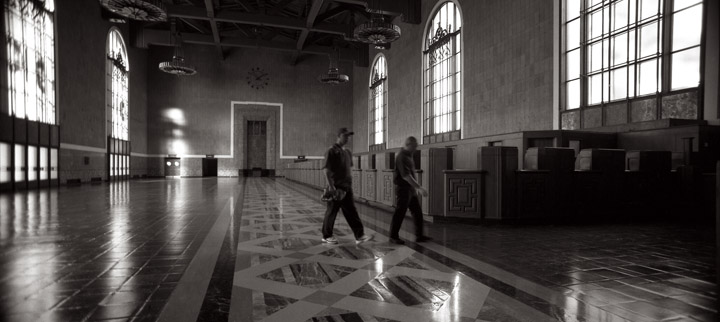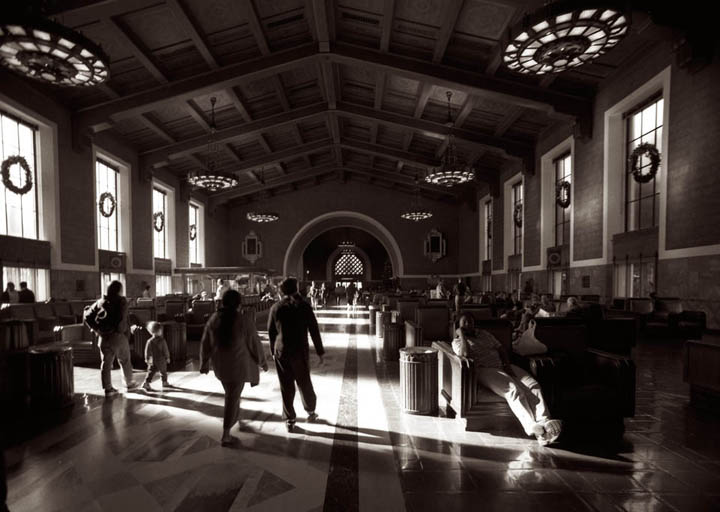
I hope you’ll check out my books: Photographing Architecture
and Understanding and Controlling Strobe Lighting
. I hope you’ll get copies if you haven’t already. Of course you know that one reason for this blog is to sell the book and get you to consider one of my classes at BetterPhoto.com: An Introduction to Photographic Lighting, Portrait Lighting on Location and in the Studio, Getting Started in Commercial Photography If you’re in the Indianapolis area there are other opportunities as well. I’ll be teaching a class in commercial photography next spring at Ivy Tech.
I did my first shoot for the project I discussed in the last blog entry. These are the images I used in this entry. Of course these don’t really look like prints, they look like the way you balanced your screen. My working title is Interiors. This shoot went well, there are, however, some defects in some negatives. I did the shoot at the Indiana Historical Society. They were very accommodating about my large camera and tripod. Many of the people in the building seemed to assume that I was one of the displays. There was more light inside the building than I had expected so the exposures were a little shorter than I expected; ranging from 1 to 12 seconds. I shot at f32 or f45 and used my two Dagors; the 8.25 inch and the 14 inch I discussed in the last blog. When you use a larger image area you need a longer lens to create the same field of view. So a 12 inch (300 mm) lens on an 8X10 camera sees like a 50 mm (2 inch) lens on my full frame Nikon D800. When you use longer lenses and a larger capture area you also need to stop the lens down further to get the same depth of field. A 12 inch lens will need to be stopped down to f64 to get the same depth of field as a 50mm lens at f16. Of course this means the shutter will be open eight times as long.
I have to work out shutter issues on some lenses before I can use them in the field. When you use long exposures you don’t need a very sophisticated shutter, in fact a lens cap will do! The problem with a lens cap is that you may shake the camera when you remove it. I have used Packard shutters, which are air driven, in the studio. These work especially well with strobes, but I’m not sure I can mount them on the camera in the field. My Dagors are both mounted in leaf shutters.
I have been using a recipe for developing the film I got from The Darkroom Cookbook, Third Edition. I used a recipe for a divided developer: D-23. The developing agents are separate from the accelerators. There are several reasons that this is advantageous for this project: one is that I can process several types of film in the same way. As I may change films, or use older film, this will help me get printable negatives. I had processing problem with the second sheet of film I shot at the Indiana Historical Society. I think I contaminated my developer. You can see streaking in one of the images I’ve attached to this blog.
As I suggested at the top of this entry, the images I’ve attached aren’t really my goal. I will be contact printing these negatives onto watercolor paper using the Van Dyke process. This is the next step in this project. I may consider other processes, like Cyanotype or Kallitype, but I hope that Van Dykes will work out. More as the project evolves.


